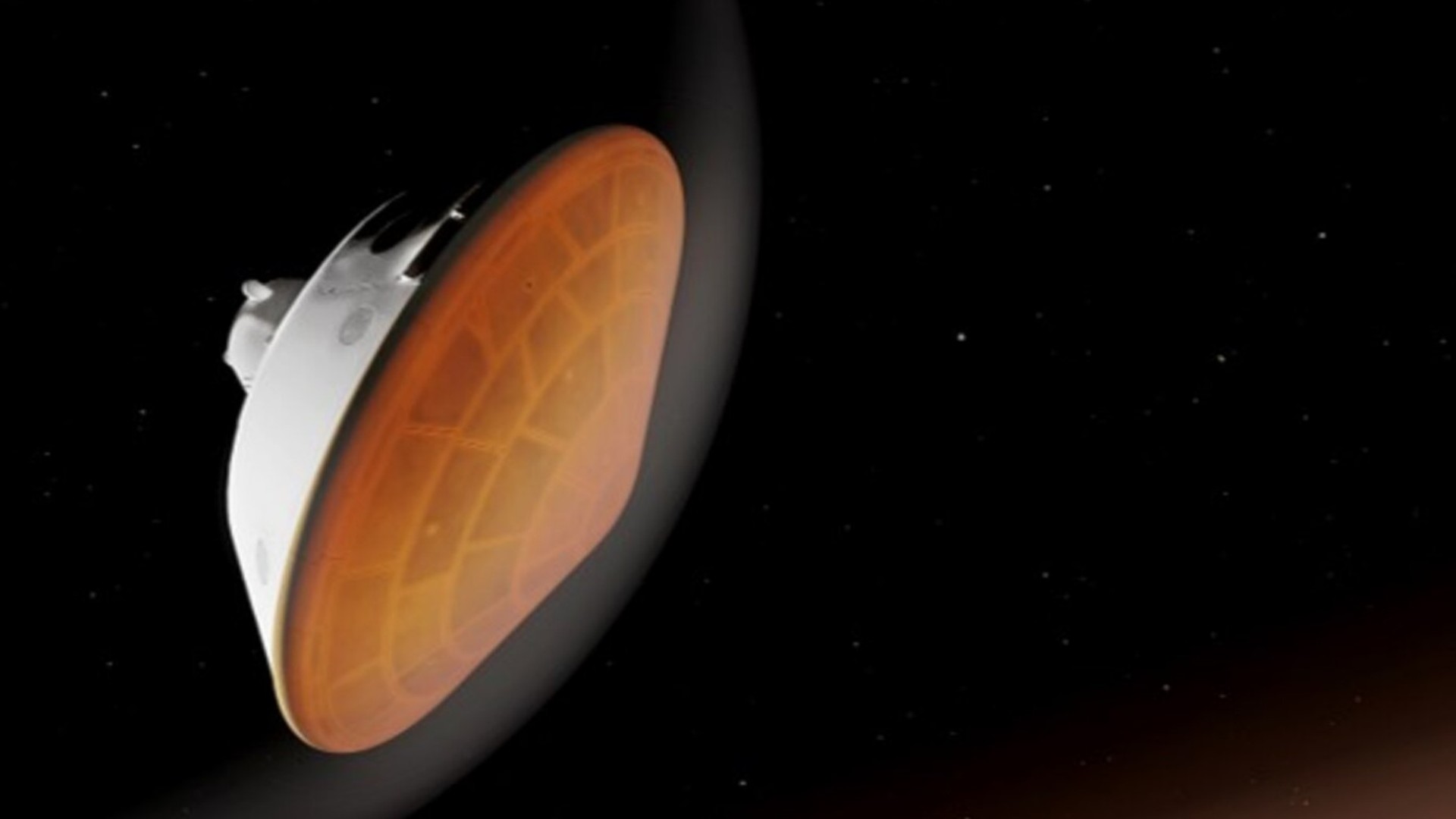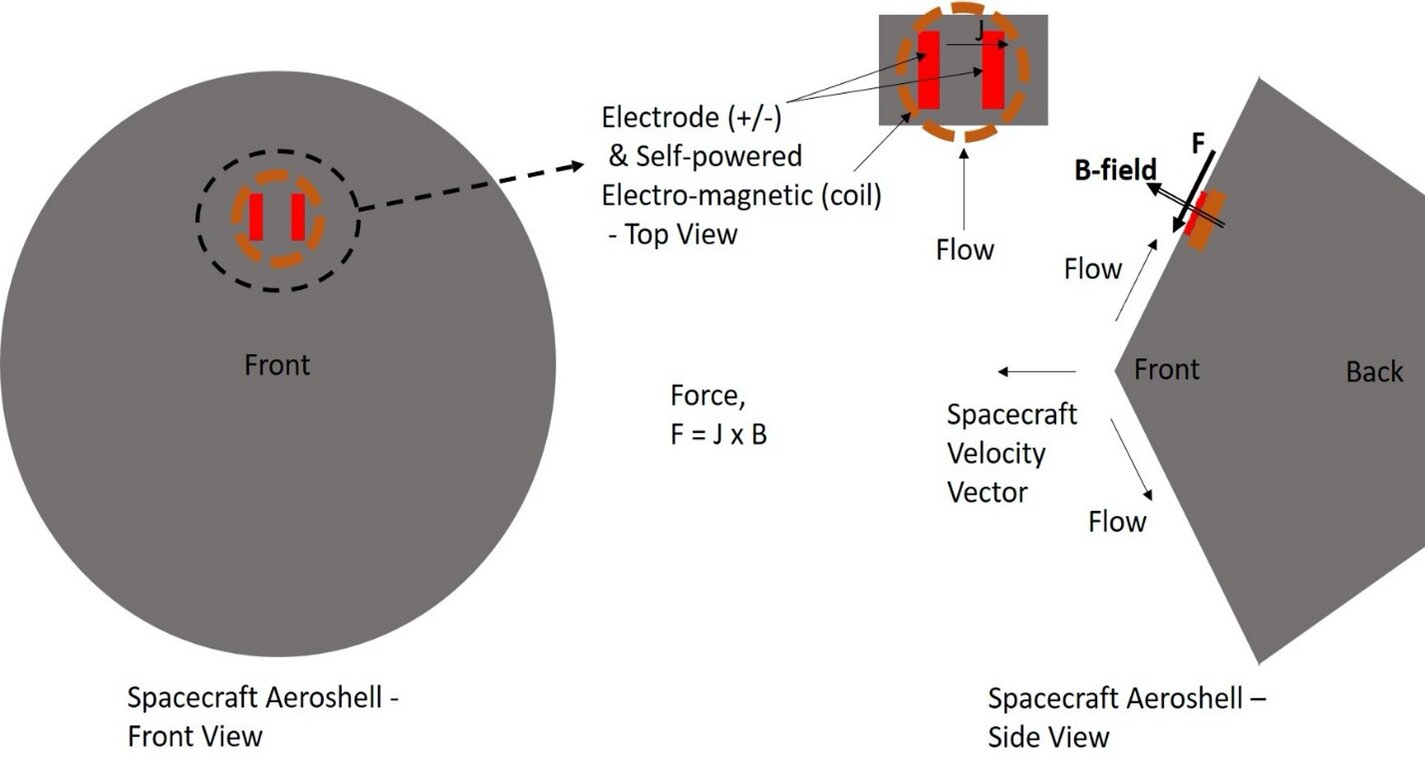
NASA's Technology Transfer Program is licensing its rights to a radical new form of propulsion that uses electromagnets to control the flow of plasma over aircraft and spacecraft flying at hypersonic speeds.
As vehicles fly through a planetary atmosphere at hypersonic speeds — at least five times faster than the speed of sound — they generate a flow of charged gases. NASA's concept involves two electrodes embedded on the heat shield of an aircraft or spacecraft, along with an electromagnet beneath the heat shield. The pair of electrodes capture the electrical charge in the ionized flow of gas outside the craft, either to charge a battery or to power an electromagnetic coil embedded in the aircraft or spacecraft. That's where things get interesting.
NASA says the electromagnet can then be used to control the flow of gas around the vehicle, either to reduce drag (atmospheric friction) or steer the vehicle. This concept is based on what is known as magnetohydrodynamics, or MHD, which uses electrical and magnetic fields to control the flow of gases or liquids.
According to a notice the agency posted on the government contracting portal SAM.gov on Thursday (Dec. 7), the technology was developed by researchers at NASA's Langley Research Center in Virginia and has been studied for use in a simulated entry into Neptune's atmosphere. A separate 2021 study of the same technology studied it for use in the atmosphere of Mars.
Related: Space Force wants 'Foo Fighter' satellites to track hypersonic missiles
The agency claims its MHD system is "simpler than conventional methods for control of hypersonic craft (e.g., chemical propulsion, shifting flight center of gravity, or trim tabs) and enables new entry, descent, and landing mission architectures."
A separate NASA statement about the technology claims it "harvests power via skimming of ionizing atmospheres" and can help "larger, heavier craft into planetary atmospheres (including Earth) at higher speeds."

In March 2023, a group of international researchers funded by the Future and Emerging Technologies (FET) program of the European Commission described a similar MHD system as Langley's, writing that sub-technologies such as high-temperature superconductors have "reached a level of industrial maturity sufficient for them to act as a key enabling technology for this application."
NASA has researched similar magnetohydrodynamic approaches for years, dating back to at least 1965. A 2003 study conducted by researchers at the agency's Marshall Space Flight Center in Alabama cites the long history of research into the topic at Langley, noting that "the NASA Langley program was an extremely successful effort."
The U.S. Department of Defense has also tested and studied various methods of steering and reducing the drag experienced by hypersonic vehicles for decades. For example, the military has researched the use of lasers to reduce the air density in front of a vehicle and looked into leveraging the high rates of spin and vibration of electrically charged surfaces to achieve similar results as the system being licensed by NASA Langley.
NASA invites companies interested in licensing their technology to apply for a license the agency's Technology Transfer Portal at https://technology.nasa.gov/.







